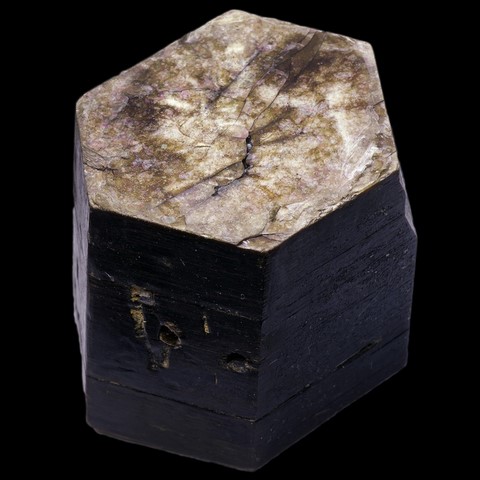BIOTITE
Class : Silicates
Subclass : Phyllosilicates
Crystal system : Monoclinic
Chemistry : K(Mg,Fe)3AlSi3O10(OH)2
Rarity : Very common
Biotite is the most common mineral of the mica group. It is one of the essential constituents of granites and their pegmatites, granodiorites, syenites and diorites, sometimes also gabbros and norites, and the main constituent of certain lamprophyres. It is also found in metamorphic rocks where it is characteristic of the mesozone (micaschists, gneiss), it is common but rarer in granulites. It is also present in volcanic rocks (trachytes, andesites). Its easy alteration into chlorite, muscovite, vermiculite or montmorillonite makes it vulnerable : it is rare in sedimentary rocks. It owes its name to the physicist and mineralogist Jean-Baptiste Biot. It forms a continuous series with phlogopite, its magnesian equivalent, the term biotite being reserved for terms in which the Mg/Fe ratio is less than 2/1. The varieties richest in iron are called lepidomelane, annite being the pure ferrous term. Like all micas, biotite occurs in lamellae constituting tabular or prismatic crystals with hexagonal or lozenge outlines often presenting a knife-edge facies in pegmatites. It commonly forms thick or scaly lamellar aggregates. Transparent to opaque, its color is black to brown-red and brown, sometimes dark green.
Biotite in the World
Biotite in France
In France, biotite is present almost everywhere. The most beautiful crystals undoubtedly come from the Mas-Barbu quarry near Bessines-sur-Gartempe (Haute-Vienne) and measure more than 10 cm in diameter.
Twinning
No known twin for the species.
Fakes and treatments
No fake inventories for this mineral species.
Hardness : 2.5 to 3
Density : 2.8 to 3.4
Fracture : Scaly
Trace : White
TP : Opaque to transparent
RI : 1.552 to 1.618
Birefringence : 0.004 to 0.005
Optical character : Biaxial -
Pleochroism : Strong
Fluorescence : None
Solubility : Sulfuric acid
Magnetism : Paramagnetic
Radioactivity : None

